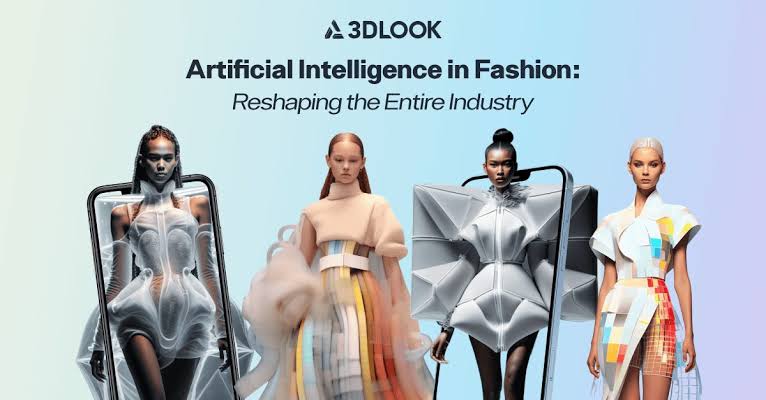Discover how AI-assisted fashion design is transforming the industry through machine learning. Learn how personalized clothing and sustainable practices are reshaping fashion, enhancing creativity, and improving production efficiency.
Artificial intelligence has made profound inroads into various industries. Fashion design is no exception. The intersection of AI and fashion is transforming how garments are designed produced and marketed. Machine learning, a subset of AI plays pivotal role in this transformation. It enables designers to create fashion that is both personalized and sustainable. This article explores how AI-assisted fashion design works. It also examines its benefits and future it promises for industry.
Understanding AI in Fashion Design
Artificial intelligence particularly machine learning, is revolutionizing fashion design by introducing new tools and techniques that enhance creativity and efficiency. Machine learning algorithms can analyze vast amounts of data. They uncover trends predict consumer preferences and optimize design processes. This capability enables designers to create clothing that resonates with individual tastes. They respond to changing fashion trends more swiftly.
Machine learning algorithms are designed to learn from data. They make predictions or decisions without being explicitly programmed. In context of fashion design, these algorithms can process data related to fashion trends customer preferences and historical sales. They generate insights that inform design decisions. For example, AI can analyze social media trends to identify emerging fashion styles. It suggests design elements that align with current consumer interests.
Personalized Fashion Design
## AI in Fashion Design
One of most exciting applications of AI in fashion design is creation of personalized clothing. Traditional fashion design often follows one-size-fits-all approach. AI allows for more tailored experience. By analyzing individual customer data such as body measurements, style preferences and past purchase history AI can generate design recommendations that are uniquely suited to each person.
AI-powered tools can also assist designers in creating custom patterns and fits. For instance virtual fitting rooms equipped with AI can simulate how different garments will look on a user based on specific measurements and body shape. This technology enhances shopping experience but also reduces likelihood of returns and exchanges. This leads to more efficient and customer-centric approach.
Sustainable Fashion Through AI
Sustainability is growing concern in fashion industry. AI is contributing to more eco-friendly practices. Machine learning algorithms can optimize use of materials reduce waste and improve overall efficiency of design and manufacturing processes. By predicting demand more accurately, AI helps prevent overproduction. It minimizes excess inventory which is significant contributor to waste in fashion industry.
AI can also assist in selection of sustainable materials. By analyzing data on environmental impact of various fabrics and production methods, AI can guide designers toward more eco-friendly choices. For example AI can recommend materials that have lower carbon footprint or are made from recycled resources. Additionally, AI can support development of innovative materials by analyzing properties of different substances. It suggests new combinations that are both functional and sustainable
Improving Production Efficiency
AI's impact extends beyond design to production stage. Machine learning algorithms can streamline manufacturing processes by optimizing supply chains predicting maintenance needs and improving quality control. For instance, AI can analyze data from production lines. It identifies potential issues before they occur reducing downtime and ensuring smoother manufacturing process.
In addition, AI enhances inventory management by predicting demand and adjusting production schedules accordingly. This capability helps reduce surplus stock. It minimizes risk of stockouts leading to more efficient and responsive supply chain. By integrating AI into production processes, fashion companies achieve greater operational efficiency and respond more quickly to market changes
The Future of AI in Fashion Design
As AI technology continues to advance its role in fashion design is expected to grow even further. Future of AI in fashion promises more sophisticated tools and techniques for creating personalized and sustainable clothing. Innovations such as generative design algorithms use AI to create entirely new design concepts based on specific parameters. This could revolutionize how fashion is conceptualized and produced.
Moreover, integration of AI with other emerging technologies such as augmented reality (AR) and virtual reality (VR) could enhance design and shopping experience. For example AR could allow customers to visualize how AI-generated designs look in real-time. Meanwhile, VR could provide immersive virtual fashion shows and fitting rooms. These advancements will likely make fashion design more interactive and accessible for consumers
Challenges and Considerations
Despite its potential use of AI in fashion design also presents challenges. Ensuring AI-generated designs align with human creativity and emotional connection is crucial. Fashion is not only about aesthetics but also about expressing identity and culture. Designers must strike balance between leveraging AI's capabilities and maintaining artistic and cultural aspects of fashion.
Additionally, data privacy and security are important considerations. Collecting and analyzing customer data for personalized design raises questions about how this data is used and protected. Fashion companies must implement robust data protection measures be transparent about their data practices to build and maintain customer trust
